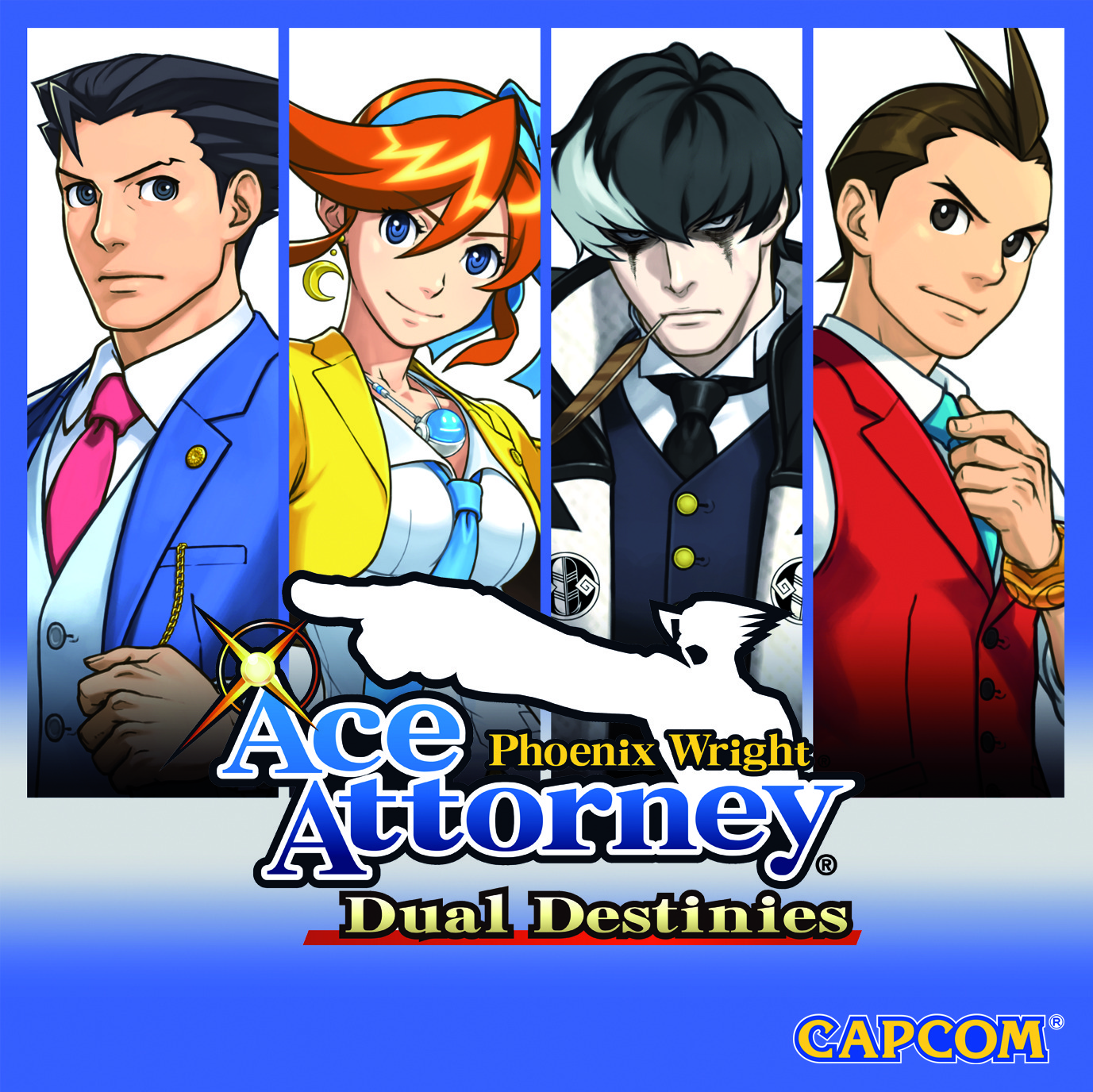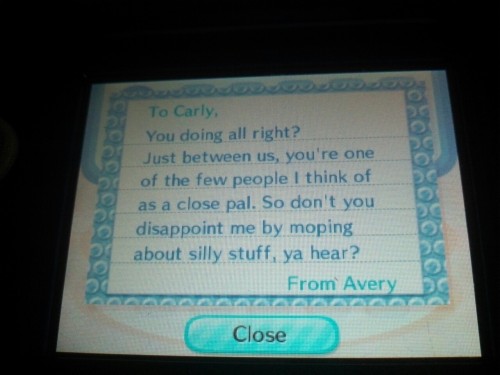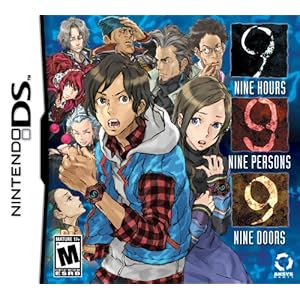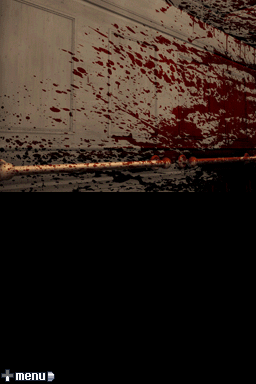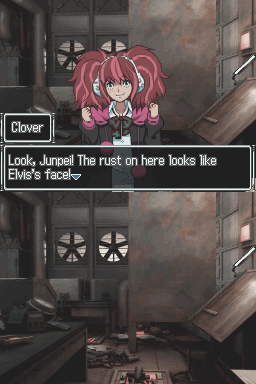As a visual medium, anime (and really any TV show or movie, animated or live-action) should be appealing to the eye. Our first impression is what we see. What I saw in Hamatora was really bright colors. Really bright colors. Unfortunately, when a show is all style and no substance, the pretty colors and cool-looking characters aren't enough to make the viewing experience a pleasurable one.
Hamatora is a 12-episode anime series adapted from an ongoing manga of the same name. In Yokohama 2014, some people have a special ability called a Minimum. This minimum differs from person to person, as some can become super strong, move super fast, or use a program to look into the future. Two of these people, named Nice and Murasaki, form a small detective agency called Hamatora, picking up odd jobs. There are many other characters -- there are actually too many characters to be shown in the 12 episodes -- who make appearances and solve cases.
The greatest thing about Hamatora is its character design. Every character has their own silhouette and style. No two characters look alike. Some of the designs are questionable (why does Nice have bandages on his face? Why does Koneko have catlike attributes [beyond "cat" being in her name]?), but when it comes down to it, they look both cool and kind of dorky. Bright colors are all the rage in Hamatora. Nice wears flashy, bright clothing. The minimum abilities are shown while the animation turns neon. Backgrounds are bright, and colors are saturated. Occasionally the show's colors turn darker, but by default, they're punching you in the face.
Unfortunately, the rest of the show falls flat. With only 12 episodes, you'd think directors and writers would want to put as much as the story from the source material as they can. Unfortunately, Hamatora suffers from filler. Characters go to the beach. They go to hotsprings. They spend extra time on very minor characters but not enough time on the main character. By episode 12 comes around, the climax has to be sped up, and it all ends on a cliffhanger. The villain is introduced rather early as a flamboyant man who is obsessed with Nice, and yet he remains just as predictable by the end. Motivations are rarely discussed or shown, and Nice's character arc is sidelined for other characters, minor characters like Birthday, Ratio, Three, and Honey, though to a lesser extent. Characters tell the viewer that Nice is the best Minimum Holder and scored amazingly well on tests from Facultas Academy, a school that all Minimum Holders must attend. But there's nothing about Nice that makes him stand out especially from the crowd because we know next to nothing about him over 12 episodes.
Despite the audience knowing nothing of Nice's background or motivations, the show desperately wants people to care about Nice. He's presented as an unconventional guy more concerned with helping people than large sums of cash. Despite being the supposed best Minimum Holder, he's done next to nothing with it upon graduating. He's the everyguy/good guy you're supposed to root for, but Nice doesn't want to be the hero Hamatora wants him to be. By the end, he refuses to help another Minimum Holder who just wants to look normal again. He acts on his own. He refuses to partake in the strength from friendship trope. But Nice doesn't find his stride because the show can't find its groove.
Hamatora is trying to be too many things at once. It's a mystery story wrapped up in magic, action, comedy, and drama. It tries to subvert tropes, but by doing so it creates mood whiplash both within a single episode and from episode to episode. For example, the episode following a character's death was the "mandatory beach episode" common in most anime. Each episode has a self-contained mystery that wraps up neatly and conveniently while the main plot is pushed forward in the last minute.
Even more unsettling is Hamatora's treatment of its female characters and a gay character. Hajime is a girl who loves to eat and has a good relationship with Nice (though how they know each other and why they're important to each other is up in the air because it's never shown or explained). She's a Minimum Holder as well, but her power isn't shown until the very end of episode 11 and is triggered by despair. She then proceeds to pass out and do nothing for the finale. Koneko is an easily forgotten character who finds jobs for Hamatora. Despite essentially being their employer, Koneko essentially does nothing but stay in the headquarters and clean cups with the store owner. Honey has more action and is more aggressive than Hajime and Koneko combined. Nice and the others value her ability to see into the future, and she's an essential part of the team in the end. Other female characters include a client, an angry mother, background characters, and a hacker who works with the villain for no discernible reason.
 The show also includes an incredibly stereotypical gay character in the hot springs episode and openly laughs at him. I wanted to laugh at the people responsible for creating such an awful character, but I was too busy being openly disgusted. This character's power is being able to attract men with his sweat, playing on the All Gay Men Are Promiscuous trope. He makes all of the other characters uncomfortable, and his power is completely for laughs. He also does sit-ups for a straight 30 seconds, as if it were on a loop, so it was obvious this episode was never meant to be a serious one. Hamatora tries to convince the audience that it's a serious show, but it slips up constantly with things that don't even end up being funny; they're just lazy.
The show also includes an incredibly stereotypical gay character in the hot springs episode and openly laughs at him. I wanted to laugh at the people responsible for creating such an awful character, but I was too busy being openly disgusted. This character's power is being able to attract men with his sweat, playing on the All Gay Men Are Promiscuous trope. He makes all of the other characters uncomfortable, and his power is completely for laughs. He also does sit-ups for a straight 30 seconds, as if it were on a loop, so it was obvious this episode was never meant to be a serious one. Hamatora tries to convince the audience that it's a serious show, but it slips up constantly with things that don't even end up being funny; they're just lazy.
With plot holes, a forced storyline, and contrived character interaction, Hamatora is fun to look at, but it's not fun to actively watch. Despite being such a generic show, it's getting a second season this July, so I guess it at least made a decent amount of money in Japan. For a somewhat similar show that succeeds in drama, action, and distinct mini-arcs, check out Darker Than Black.
Hamatora is a 12-episode anime series adapted from an ongoing manga of the same name. In Yokohama 2014, some people have a special ability called a Minimum. This minimum differs from person to person, as some can become super strong, move super fast, or use a program to look into the future. Two of these people, named Nice and Murasaki, form a small detective agency called Hamatora, picking up odd jobs. There are many other characters -- there are actually too many characters to be shown in the 12 episodes -- who make appearances and solve cases.
The greatest thing about Hamatora is its character design. Every character has their own silhouette and style. No two characters look alike. Some of the designs are questionable (why does Nice have bandages on his face? Why does Koneko have catlike attributes [beyond "cat" being in her name]?), but when it comes down to it, they look both cool and kind of dorky. Bright colors are all the rage in Hamatora. Nice wears flashy, bright clothing. The minimum abilities are shown while the animation turns neon. Backgrounds are bright, and colors are saturated. Occasionally the show's colors turn darker, but by default, they're punching you in the face.
Despite the audience knowing nothing of Nice's background or motivations, the show desperately wants people to care about Nice. He's presented as an unconventional guy more concerned with helping people than large sums of cash. Despite being the supposed best Minimum Holder, he's done next to nothing with it upon graduating. He's the everyguy/good guy you're supposed to root for, but Nice doesn't want to be the hero Hamatora wants him to be. By the end, he refuses to help another Minimum Holder who just wants to look normal again. He acts on his own. He refuses to partake in the strength from friendship trope. But Nice doesn't find his stride because the show can't find its groove.
Hamatora is trying to be too many things at once. It's a mystery story wrapped up in magic, action, comedy, and drama. It tries to subvert tropes, but by doing so it creates mood whiplash both within a single episode and from episode to episode. For example, the episode following a character's death was the "mandatory beach episode" common in most anime. Each episode has a self-contained mystery that wraps up neatly and conveniently while the main plot is pushed forward in the last minute.
Even more unsettling is Hamatora's treatment of its female characters and a gay character. Hajime is a girl who loves to eat and has a good relationship with Nice (though how they know each other and why they're important to each other is up in the air because it's never shown or explained). She's a Minimum Holder as well, but her power isn't shown until the very end of episode 11 and is triggered by despair. She then proceeds to pass out and do nothing for the finale. Koneko is an easily forgotten character who finds jobs for Hamatora. Despite essentially being their employer, Koneko essentially does nothing but stay in the headquarters and clean cups with the store owner. Honey has more action and is more aggressive than Hajime and Koneko combined. Nice and the others value her ability to see into the future, and she's an essential part of the team in the end. Other female characters include a client, an angry mother, background characters, and a hacker who works with the villain for no discernible reason.
 The show also includes an incredibly stereotypical gay character in the hot springs episode and openly laughs at him. I wanted to laugh at the people responsible for creating such an awful character, but I was too busy being openly disgusted. This character's power is being able to attract men with his sweat, playing on the All Gay Men Are Promiscuous trope. He makes all of the other characters uncomfortable, and his power is completely for laughs. He also does sit-ups for a straight 30 seconds, as if it were on a loop, so it was obvious this episode was never meant to be a serious one. Hamatora tries to convince the audience that it's a serious show, but it slips up constantly with things that don't even end up being funny; they're just lazy.
The show also includes an incredibly stereotypical gay character in the hot springs episode and openly laughs at him. I wanted to laugh at the people responsible for creating such an awful character, but I was too busy being openly disgusted. This character's power is being able to attract men with his sweat, playing on the All Gay Men Are Promiscuous trope. He makes all of the other characters uncomfortable, and his power is completely for laughs. He also does sit-ups for a straight 30 seconds, as if it were on a loop, so it was obvious this episode was never meant to be a serious one. Hamatora tries to convince the audience that it's a serious show, but it slips up constantly with things that don't even end up being funny; they're just lazy.With plot holes, a forced storyline, and contrived character interaction, Hamatora is fun to look at, but it's not fun to actively watch. Despite being such a generic show, it's getting a second season this July, so I guess it at least made a decent amount of money in Japan. For a somewhat similar show that succeeds in drama, action, and distinct mini-arcs, check out Darker Than Black.








